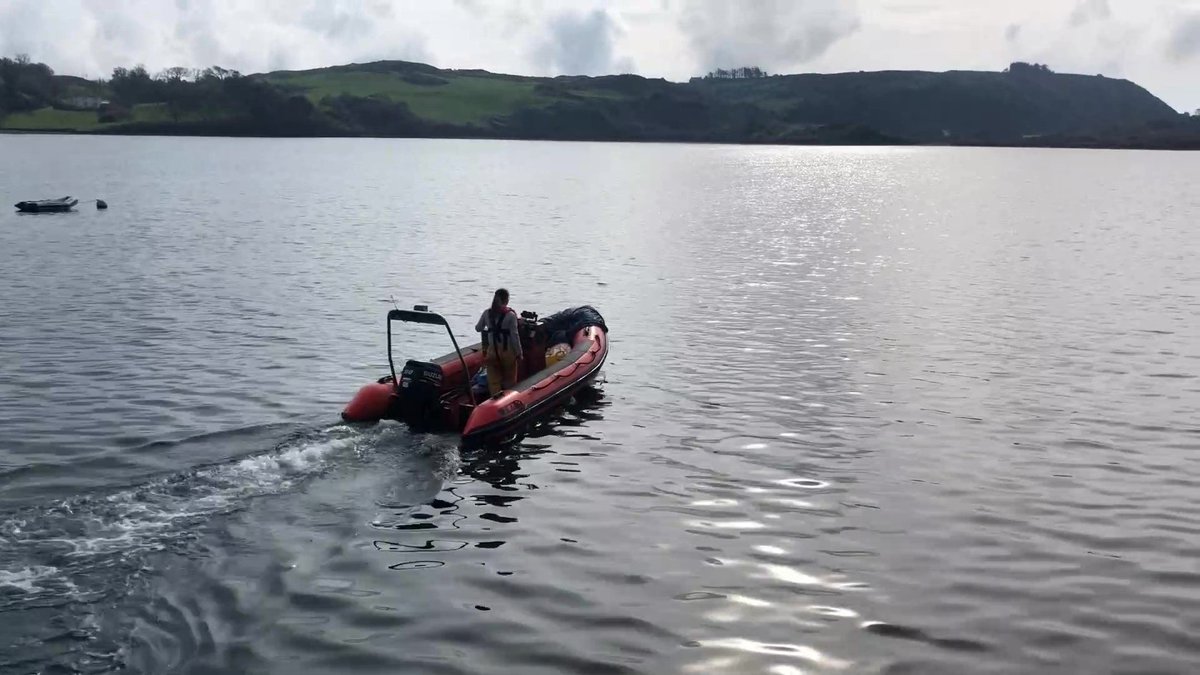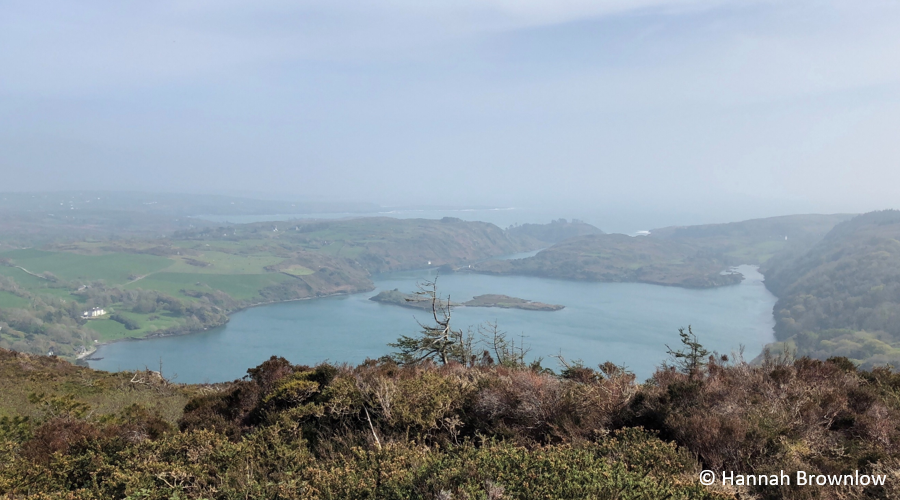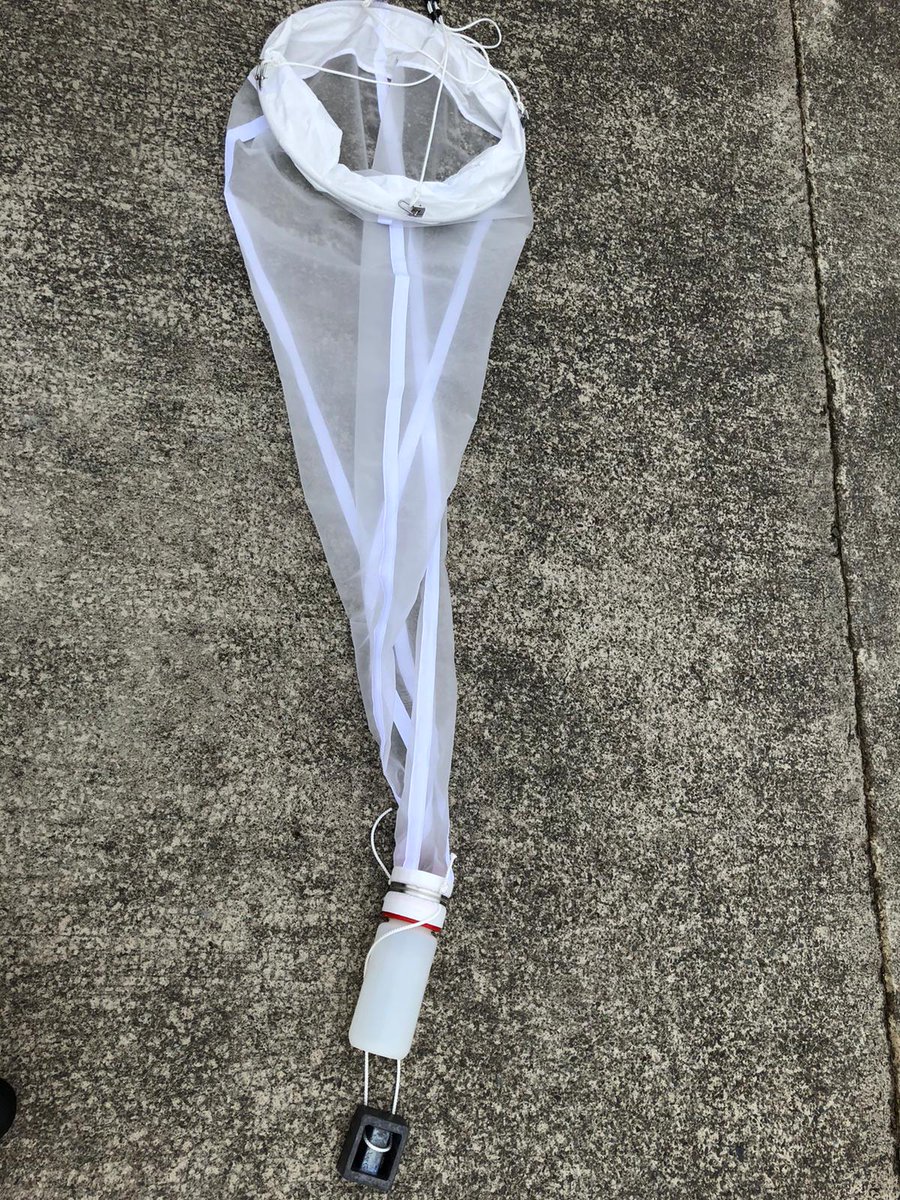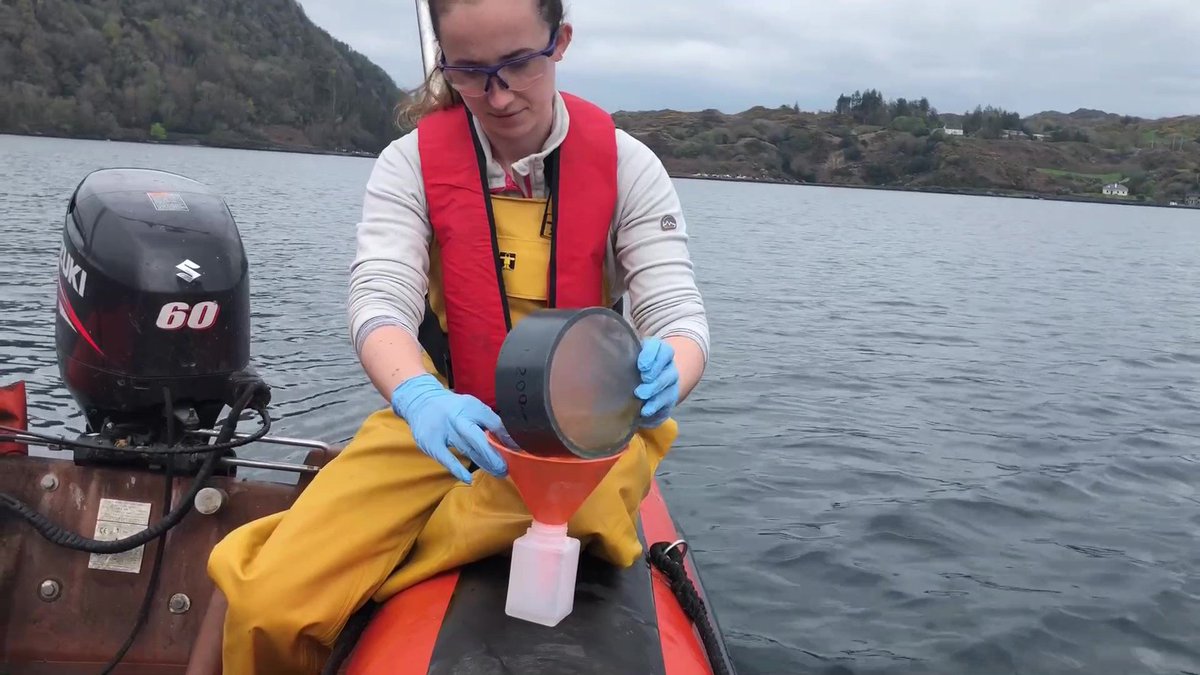
1/ Good evening everyone and welcome to the 4th day all about plankton research. Now that we have the basics covered on what plankton is, why we study it and the history of plankton research, I’m going to go a bit more personal and introduce you to my own research 👩🔬🎣 

2/ As I said on Day 1, I am a PhD student @uccBEES and @MaREI studying plankton. Specifically, I am looking at the abundance and diversity of zooplankton in a marine reserve over the course of a 2 and a half year time period. 



3/ My study site is Lough Hyne, a marine reserve located just outside Skibbereen in West Cork. It is actually Ireland’s first marine reserve designated in 1981. The Lough is 0.6 km long by 0.4 km wide and is completely marine. 

4/ Lough Hyne is one of the most studied bodies of water of its size in the world, with research dating back to 1886. Professor Louis Renouf then continued the research in 1923, creating a biological station there. Research has continued there ever since
5/ I sample at the same spot in the Lough each sampling occasion. There is a buoy in the western trough of the Lough, the deepest part of the Lough, at nearly 50m. I do this for consistency and to try and avoid increasing the variables in our sampling.
Buoy marked by yellow dot
Buoy marked by yellow dot

6/ The net that I use is essentially the same as the one designed by Victor Hensen (from yesterday's thread). It has a metal hoop with an opening diameter of 50 cm. The mesh on the net is 200 µm, which is suitable for catching zooplankton. 

7/ The first step is to get the net rigged up properly. There are four bridles attached to the ring of the net which connect at a central point. I attach the rope I’m going to use to this central point using a bowline knot typically. 

8/ I then screw in the cod end to the base of the net. This is where the plankton is collected. A 2 kg diving weight is then attached to the bottom of the net to ensure the net goes down as vertically as possibly into the water column. On rough days, 4 kg is needed
9/ Then I check the reading on our flowmeter. A flowmeter is a device that measures the amount of water filtered for each sample. There is a counter on the flowmeter which rotates as the net is pulled up through the water. 

10/ We take the number before the net goes into the water and after, to get the number of rotations per sample. This number is multiplied by the opening area of the net and a calibration factor to give the volume of water filtered. This is important for calculating density.
11/ Then the net is lowered into the water. I sample to 40 m depth so I let out 40 m of rope. I allow a few minutes for the net to reach this depth before I haul the net back up. This usually feels like a strong tug on the rope. I aim to haul the net up at a rate of 1 m/s.
12/ Once the net is back on board, I note down the flowmeter reading. Then I pour the contents of the cod end back through the bottom of the plankton net. I do this because often the cod end is overflowing and if I unscrew it at this point I risk losing some of the sample. 

13/ I then wash plankton caught on the mesh of the net back down into the cod end, trying to use as little water as possible. I do this by either splashing the net with water over the side of the boat or using a wash bottle. 

14/ I then release the cod end and pour the contents into a 180 µm sieve. The reason I do this is the reduce the volume further so that all of the sample will fit into the sample jar. The plankton is then washed down into a labelled sample jar which already contains preservative. 



15/ The preservative I use is a 4% formaldehyde-seawater solution, known as formalin. Other scientists often use 70% ethanol. However, ethanol usually causes gelatinous organisms to disintegrate so we instead use formalin which nicely preserves the delicate gelatinous material.
16/ On each sampling occasion, I take 3 replicate samples. Plankton is patchy, and it could just happen by chance the exact moment I’m sampling there is a really dense patch of plankton passing, and this could lead me to interpret that there is a plankton bloom on that date
17/ Alternatively, I could happen to sample in a patch which contains very little plankton. So I take three samples to be more confident in the numbers I get for each creature and to have more confidence in my results.
18/ I then take environmental measurements using an oxygen probe and a CTD. A CTD measures the salinity and temperature of the water at each depth. It is important to take these measurements as the environment can often explain much of the variability seen in plankton abundance 

19/ As you may have noticed in the pictures in the previous tweets, we sample in nearly all weather! Lough Hyne is very sheltered and so it is safe to sample in conditions that it would not be safe to sample in out at sea. I have both glorious and horrendous sampling days! 

20/ To process these samples, I remove them from the preservative in a fumehood and put the sample in tap water. I then count how much of each organism is in a sample under a microscope using a bogorov tray and clicker. 

21/ We have some data here from 2021 and 2022 showing the abundance over time of copepods in Lough Hyne. The peak abundance occurred in July 2021. The abundance of copepods this summer has also been much lower than last year 

22/ There's also some data for the jellyfish in the Lough From 2021 and 2022. The peak for 2022 occurred two months earlier than in 2021, and like the copepods, the overall abundance this year is also lower 

23/ If you are interested in following our time series, check out our website planktonclub.ie where we update these graphs on a monthly basis. There is also a time series from my colleague @HannahBrownlow who studies plankton in Bantry Bay.
24/ That’s all for today 😊See you back here tomorrow where I’ll be telling about my particular passion in plankton research: jellyfish
#ScienceWeek2022 #womeninSTEM
#ScienceWeek2022 #womeninSTEM
• • •
Missing some Tweet in this thread? You can try to
force a refresh



















